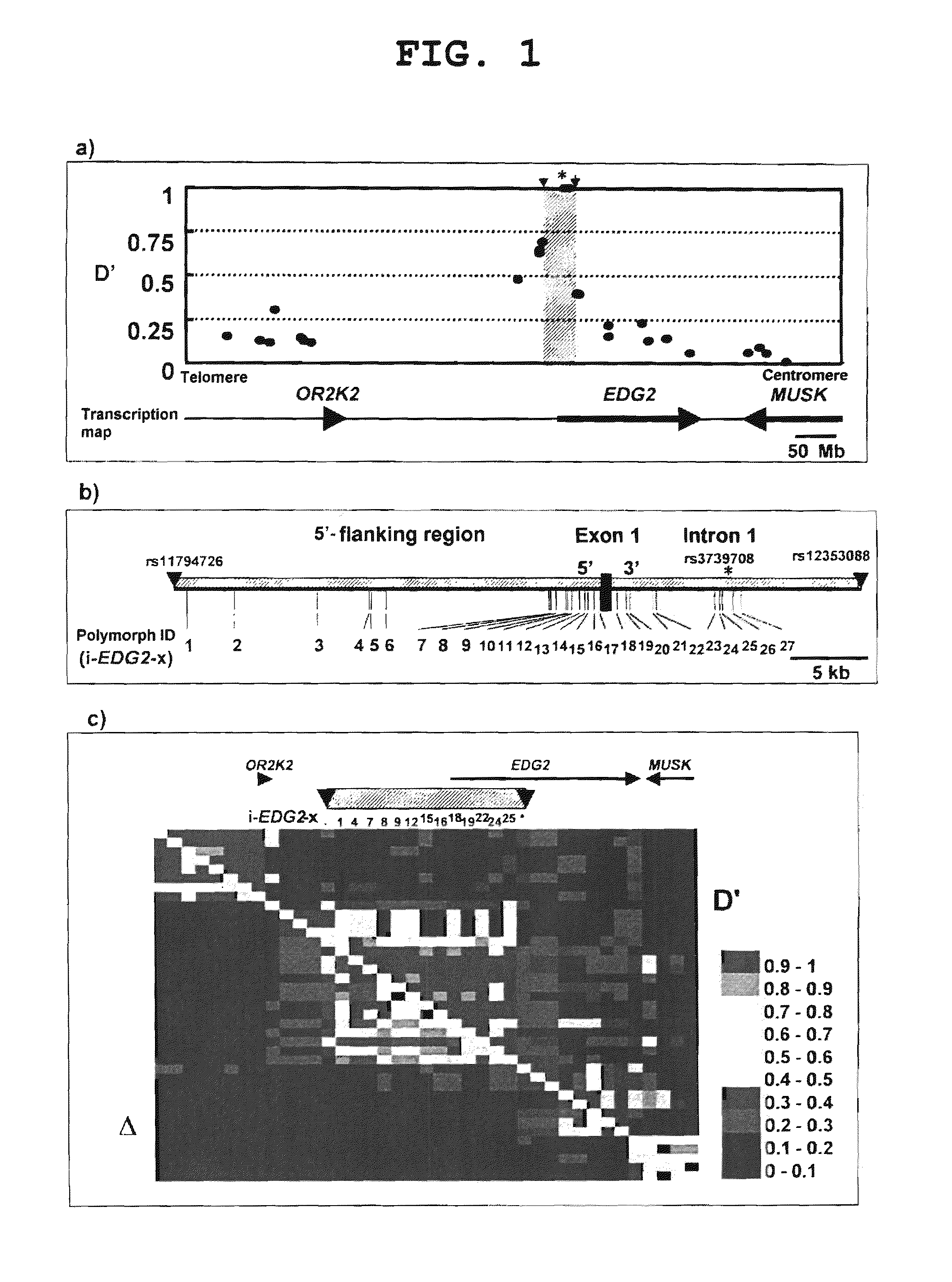Gene sensitive to bone/joint disease and use thereof
- Summary
- Abstract
- Description
- Claims
- Application Information
AI Technical Summary
Benefits of technology
Problems solved by technology
Method used
Image
Examples
example 1
Selection of GPCRs Expressed in Cartilage by Oligonucleotide Microarray Analysis
[0485]As a technique for identifying an osteoarthritis (OA) susceptibility gene using a correlation analysis, a candidate gene approach to G protein coupled receptors (GPCRs) expressed in articular cartilage was adopted. By targeting GPCRs as candidate genes for OA susceptibility genes, it is possible to identify a direct drug discovery target with a low molecular compound. It is also possible to identify an OA susceptibility signal transduction pathway, and a molecule involved in the signal can also be investigated as a drug discovery target. However, it is unrealistic to deal with all GPCRs as candidate genes. Hence, it was decided to perform correlation analyses for GPCRs expressed in articular cartilage, which is the major lesion site in OA.
[0486]GPCR expression analyses were performed using microarray sets configured with oligonucleotide probes for about 60,000 kinds of target sequences (GeneChip U9...
example 2
Selection of Genotyping Probes
[0487]For performing a correlation analysis, it is necessary to determine the genotypes of single nucleotide polymorphism (SNP) present on each gene in each individual in a diseased group (cases) and a control group (controls). Hence, it was decided to determine genotypes (genotyping) using invader probes stocked by the RIKEN SNP Research Center (RIKEN SRC). For the 64 cartilage expression GPCR genes selected in Example 1, database search was performed for the presence or absence of invader probes stocked by the RIKEN SRC. As a result, 47 genes were found to have invader probes registered.
[0488]For 8 genes wherein the number of probes per gene is 1, it was decided to perform genotyping using the probe without limitation on conditions. For the remaining 39 genes wherein the number of probes per gene is 2 or more, it was decided to select haplotype tagging SNPs (htSNPs) using the genotype data from the RIKEN SRC, and use them as genotyping probes. The pro...
example 3
Selection of Knee OA Susceptibility Polymorphs Using Stepwise Screening
[0489]For the correlation analysis, the 2-stage stepwise screening technique was used. The case population used in the screening was a group of patients who visited a number of medical institutions in Japan, in whom an OA change in the knee joint was observed in X-ray diagnostic imaging (radiographic OA patient population). For primary screening, genotyping was performed on genomic DNAs extracted from a population of 368 Japanese knee OA patients and a population of 323 controls by the invader method according to the method of Ohnishi et al. [J Hum Genet. 2001; 46(8):471-7.]. Of the 167 SNPs subjected to the genotyping, 4 SNPs exhibited no polymorphism. Also, 5 SNPs did not fulfill the HWE (P≧0.01) in the control population; furthermore, 6 SNPs did not permit genotyping because probes did not work. For 155 SNPs, excluding these SNPs, a correlation analysis was performed by X2 test or Fisher's exact test; 13 SNPs ...
PUM
 Login to View More
Login to View More Abstract
Description
Claims
Application Information
 Login to View More
Login to View More - R&D
- Intellectual Property
- Life Sciences
- Materials
- Tech Scout
- Unparalleled Data Quality
- Higher Quality Content
- 60% Fewer Hallucinations
Browse by: Latest US Patents, China's latest patents, Technical Efficacy Thesaurus, Application Domain, Technology Topic, Popular Technical Reports.
© 2025 PatSnap. All rights reserved.Legal|Privacy policy|Modern Slavery Act Transparency Statement|Sitemap|About US| Contact US: help@patsnap.com



